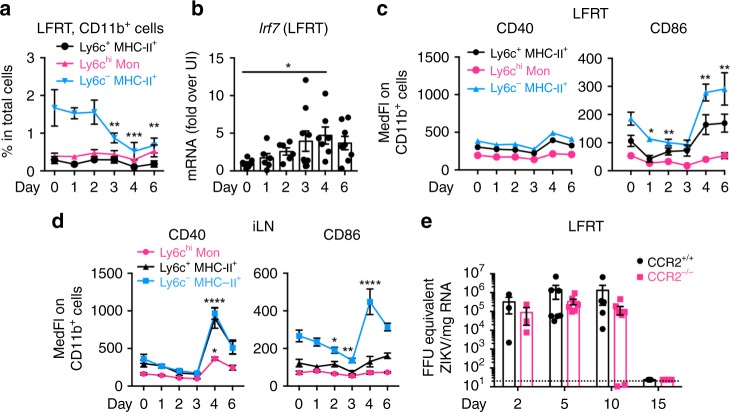Fig. 2.
Innate immune activation is delayed after intravaginal infection with ZIKV. Groups of DMPA-treated female mice were i.vag. inoculated with 2 × 104 FFU of ZIKV (PRVABC59). a Frequencies of various monocyte subsets in the LFRT post-infection. CD11b+ cells: CD19− TCRβ− EpCAM-1− Ly6G− CD11b+ Ly6c+/− IAIE+/−. Also see Supplementary Fig. 2 for gating strategy. b Detection of Irf7 induction by qRT-PCR from LFRT total RNA at indicated time-points. Surface expression of activation markers on CD11b+ cells in c LFRT and d iLN, as determined by flow cytometry. e FFU equivalents of ZIKV in total RNA from LFRT tissues of CCR2−/− and CCR2+/+ animals were determined by qRT-PCR. Data pulled from two (a, c, d, and e) or three b independent experiments; mean ± SEM, n = 3 (day 2 in e), 3–4 (day 15 in e), 4 (days 4 and 6 in a, c and d), 6 (days 0–3 in a, c, d, and day 1, 2 in b), 7 (day 0 and 4 in b, day 5 and 10 in e), 8 (day 6 in b), or 9 (day 3 in b) mice per time-point. *p < 0.05, ****p < 0.0001; two-way ANOVA with Dunnett’s multiple comparison test. Each time-point represents data from a separate group of mice, and day 0 represents data from uninfected mice. Source data for Fig. 2a–d are provided as a Source Data file

